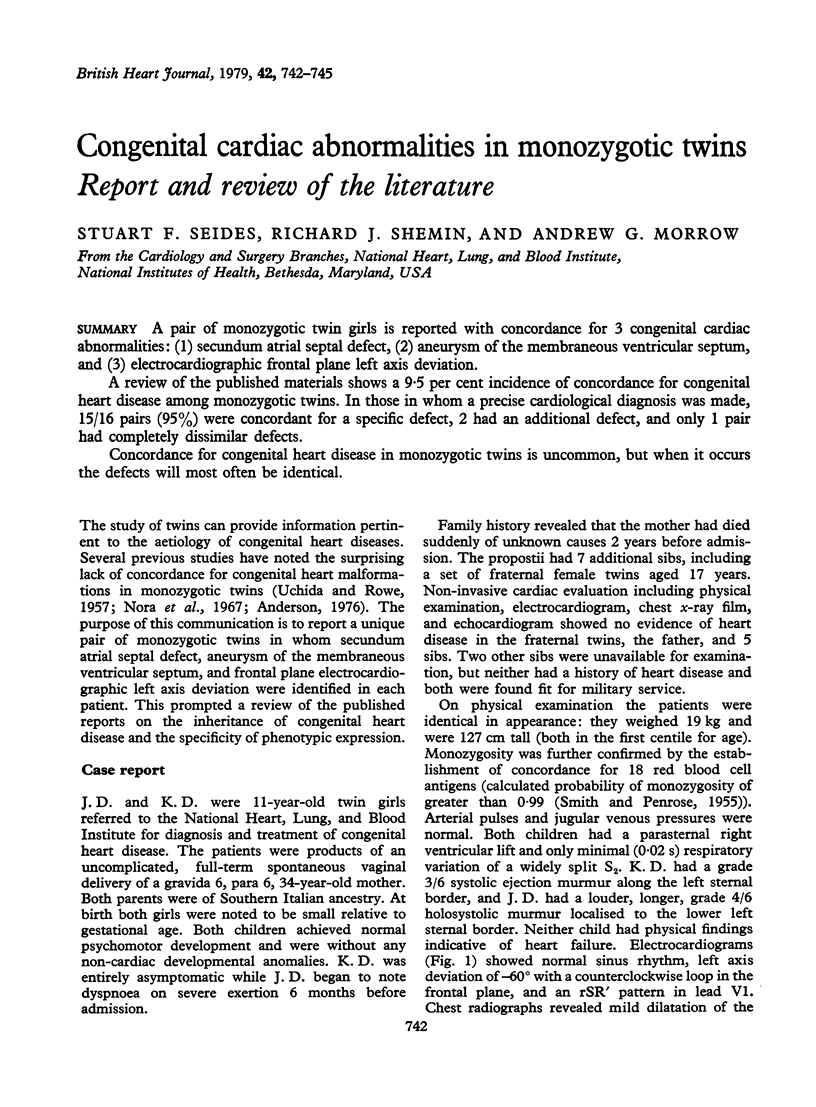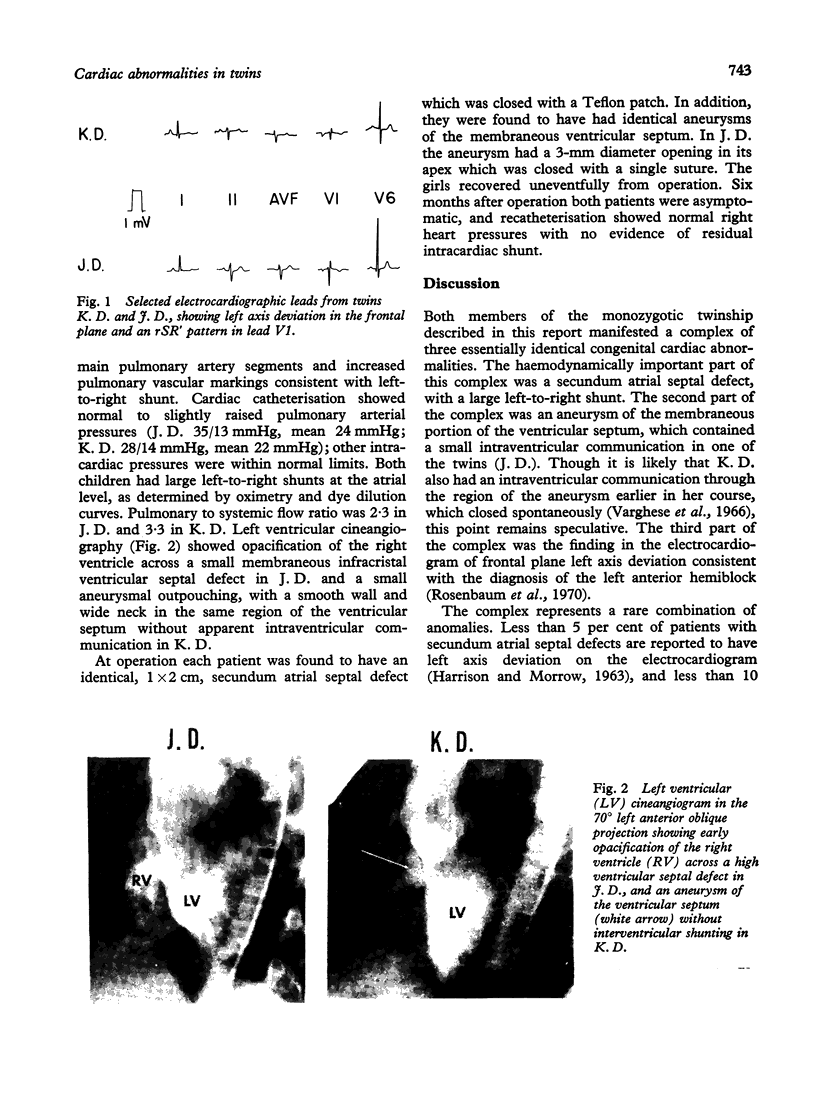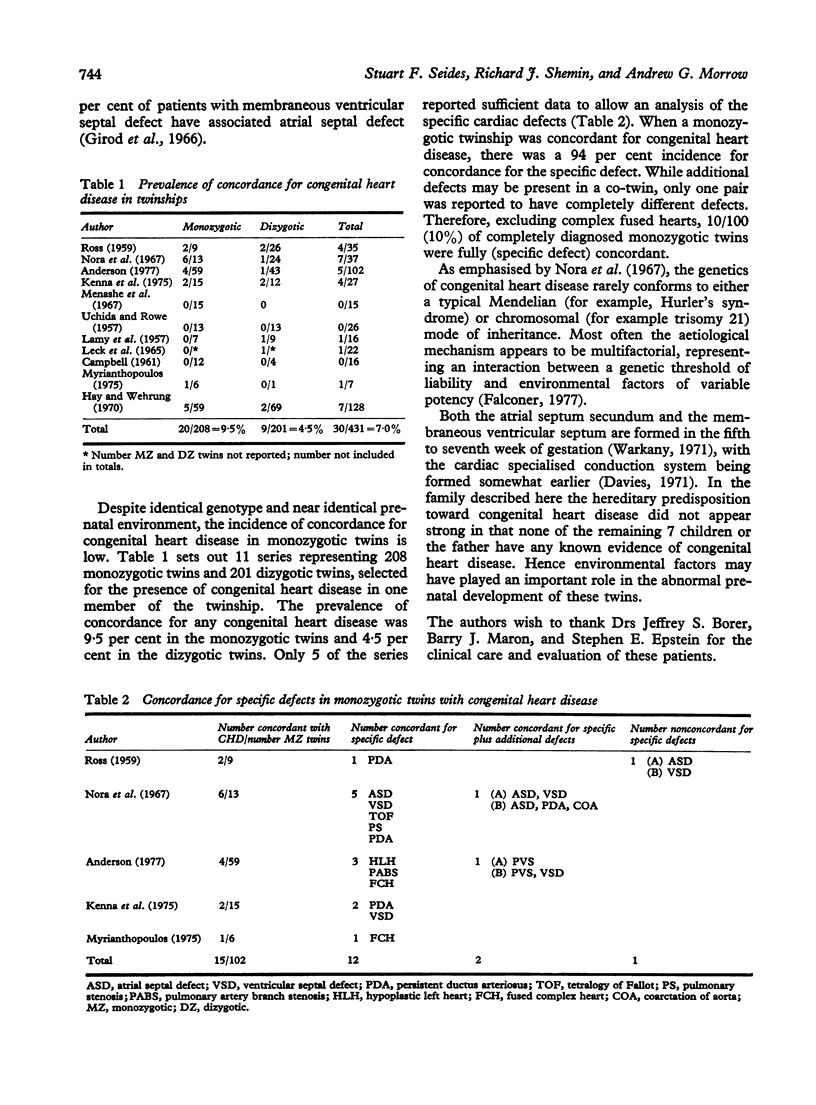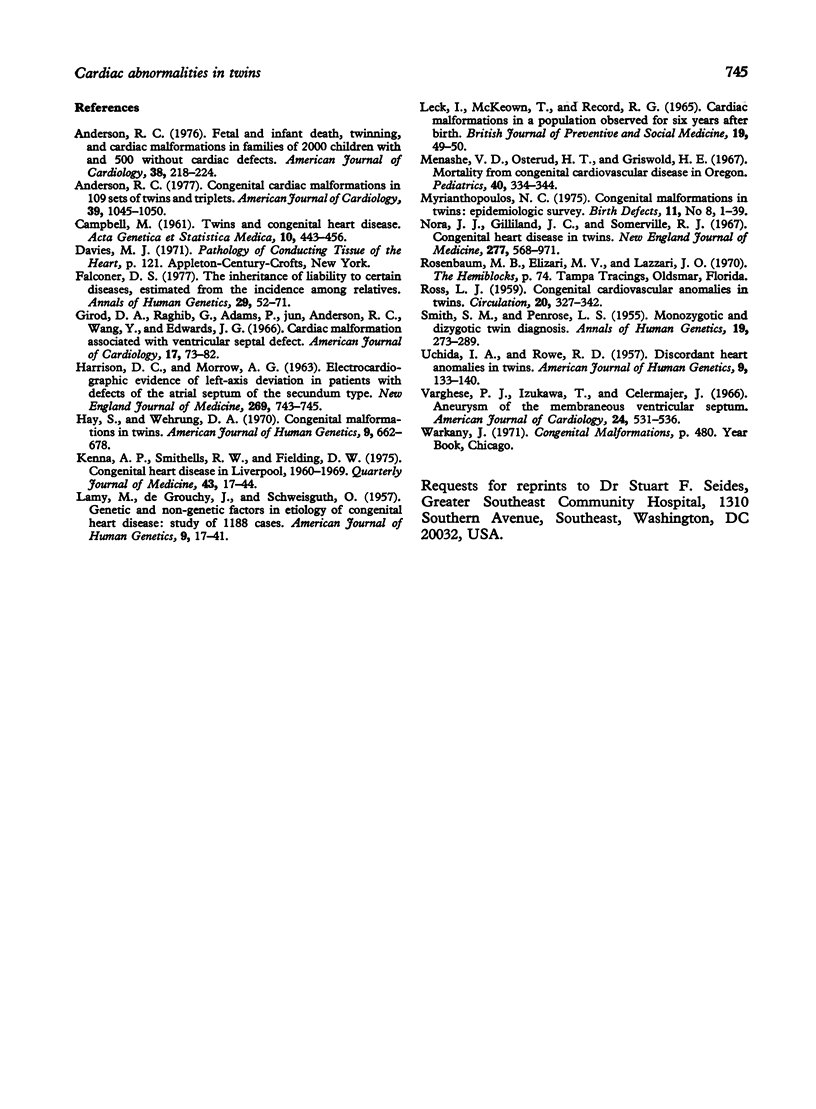Abstract
A pair of monozygotic twin girls is reported with concordance for 3 congenital cardiac abnormalities: (1) secundum atrial septal defect, (2) aneurysm of the membraneous ventricular septum, and (3) electrocardiographic frontal plane left axis deviation. A review of the published materials shows a 9.5 per cent incidence of concordance for congenital heart disease among monozygotic twins. In those in whom a precise cardiological diagnosis was made, 15/16 pairs (95%) were concordant for a specific defect, 2 had an additional defect, and only 1 pair had completely dissimilar defects. Concordance for congenital heart disease in monozygotic twins is uncommon, but when it occurs the defects will most often be identical.
Full text
PDF



Images in this article
Selected References
These references are in PubMed. This may not be the complete list of references from this article.
- Anderson R. C. Congenital cardiac malformations in 109 sets of twins and triplets. Am J Cardiol. 1977 Jun;39(7):1045–1050. doi: 10.1016/s0002-9149(77)80220-8. [DOI] [PubMed] [Google Scholar]
- Anderson R. C. Fetal and infant death, twinning and cardiac malformations in families of 2,000 children with and 500 without cardiac defects. Am J Cardiol. 1976 Aug;38(2):218–224. doi: 10.1016/0002-9149(76)90153-3. [DOI] [PubMed] [Google Scholar]
- CAMPBELL M. Twins and congenital heart disease. Acta Genet Med Gemellol (Roma) 1961 Oct;10:443–456. doi: 10.1017/s1120962300016772. [DOI] [PubMed] [Google Scholar]
- Girod D. A., Raghib G., Adams P., Jr, Anderson R. C., Wang Y., Edwards J. E. Cardiac malformations associated with ventricular septal defect. Am J Cardiol. 1966 Jan;17(1):73–82. doi: 10.1016/0002-9149(66)90263-3. [DOI] [PubMed] [Google Scholar]
- HARRISON D. C., MORROW A. G. ELECTROCARDIOGRAPHIC EVIDENCE OF LEFT-AXIS DEVIATION IN PATIENTS WITH DEFECTS OF THE ATRIAL SEPTUM OF THE SECUNDUM TYPE. N Engl J Med. 1963 Oct 3;269:743–745. doi: 10.1056/NEJM196310032691408. [DOI] [PubMed] [Google Scholar]
- Hay S., Wehrung D. A. Congenital malformations in twins. Am J Hum Genet. 1970 Nov;22(6):662–678. [PMC free article] [PubMed] [Google Scholar]
- Kenna A. P., Smithells R. W., Fielding D. W. Congenital heart disease in Liverpool: 1960--69. Q J Med. 1975 Jan;44(173):17–44. [PubMed] [Google Scholar]
- LAMY M., DE GROUCHY J., SCHWEISGUTH O. Genetic and non-genetic factors in the etiology of congenital heart disease: a study of 1188 cases. Am J Hum Genet. 1957 Mar;9(1):17–41. [PMC free article] [PubMed] [Google Scholar]
- Myrianthopoulos N. C. Congenital malformations in twins: epidemiologic survey. Birth Defects Orig Artic Ser. 1975;11(8):1–39. [PubMed] [Google Scholar]
- Nora J. J., Gilliland J. C., Sommerville R. J., McNamara D. G. Congenital heart disease in twins. N Engl J Med. 1967 Sep 14;277(11):568–571. doi: 10.1056/NEJM196709142771104. [DOI] [PubMed] [Google Scholar]
- ROSS L. J. Congenital cardiovascular anomalies in twins. Circulation. 1959 Sep;20:327–342. doi: 10.1161/01.cir.20.3.327. [DOI] [PubMed] [Google Scholar]
- SMITH S. M., PENROSE L. S. Monozygotic and dizygotic twin diagnosis. Ann Hum Genet. 1955 Jun;19(4):273–289. doi: 10.1111/j.1469-1809.1955.tb01354.x. [DOI] [PubMed] [Google Scholar]
- UCHIDA I. A., ROWE R. D. Discordant heart anomalies in twins. Am J Hum Genet. 1957 Jun;9(2):133–140. [PMC free article] [PubMed] [Google Scholar]
- Varghese P. J., Izukawa T., Celermajer J., Simon A., Rowe R. D. Aneurysm of the membranous ventricular septum. A method of spontaneous closure of small ventricular septal defect. Am J Cardiol. 1969 Oct;24(4):531–536. doi: 10.1016/0002-9149(69)90496-2. [DOI] [PubMed] [Google Scholar]



